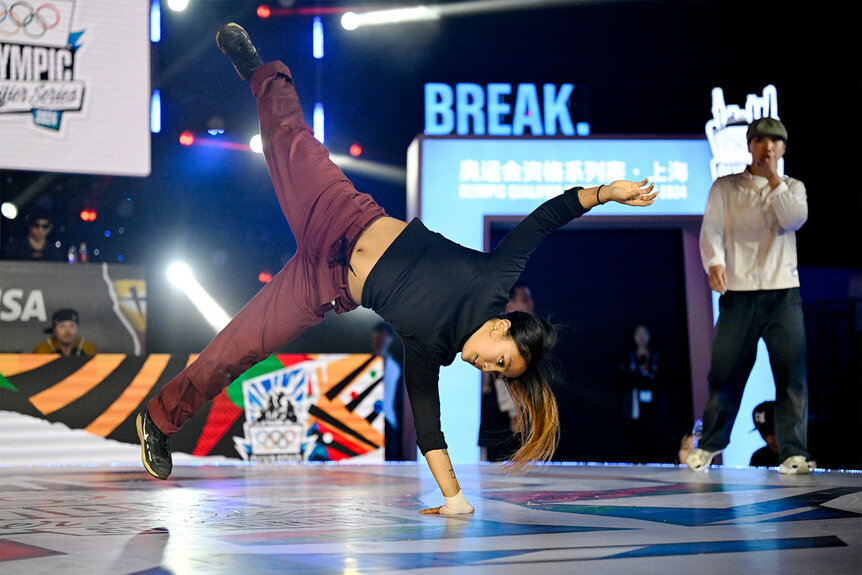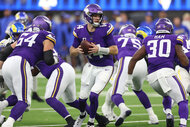Everything to Know About the Physics of Breakdancing, the Newest Olympic Sport
Gravity-defying Breaking makes its debut at the Paris Olympics.
In the late ‘70s and early ‘80s, performers in New York innovated and popularized a new style of dance, involving a combination of several types of moves including popping, locking, spins, drops, and seemingly impossible footwork. Over the years, what was originally known as Breaking has undergone a number of linguistic and kinetic evolutions.
Today, it is popularly known as Breakdancing, but the people who do it still prefer the name “Breaking.” Whether you call it Breakdancing, Breaking, B-boying, or whatever else, it’s objectively one of the coolest ways to move your body and it’s making its debut at the 2024 Summer Olympic Games in Paris.
RELATED: The Science of Olympic Diving Explained - How to Hit the Water at 30 MPH and Barely Make a Splash
If you’ve ever watched a particularly talented performer busting a move on the dance floor, you might have found yourself wondering how they move the way they do. To watch them is to see a person appear to defy gravity and every other law of physics while they’re at it. In actuality, becoming an Olympic-level Breaker requires a command of physics most of us can barely imagine.
The Rapid-Fire Physics of Breaking, aka Breakdancing
To be clear, there is a difference between breaking down the physics of a thing and the actual experience of the thing. This author could explain to you the chemical composition of an apple or how the center of mass helps a dancer pull off spins, but they cannot create the experienced taste of an apple or do the robot. On the flip side, you don’t need a degree in physics, anatomy, or anything else to dominate a dance floor. Most dancers know intuitively, through a lifetime of practice, how to command and control the ways their bodies move against the environment.
Controlling Your Center of Mass
Just moving through the world (even just walking down the street) requires you to control your center of mass. With every step, you’re balancing your bodyweight to keep it over the top of your foundation. As you walk, you are subconsciously rocking your center of mass back and forth to keep your feet beneath you. Breakers take this relationship to its ultimate extreme, by moving the body’s center of mass in unusual ways.
RELATED: How Olympic Sailors Are Able to Sail Against the Wind
When a Breaker wants to spin on their head or pull off a Freeze by balancing on a few fingers, it’s critical to have their center of mass precisely positioned. As they rapidly transition from one move to another, they have to continually reposition their bodies to keep the center of mass in the right place, lest they fall on their faces in front of the whole world.
How Breakdancers Use Friction and Resistance
Newton’s Third Law of Motion plays a starring role in any Breaking performance. In simple terms, it says that for every action there is an opposing action of equal force. Put another way, when you push against the ground, the ground pushes back.
Successful Breaking involves the precise control of friction, knowing when to use friction to your advantage and when to minimize it. Whether a Breaker is gliding smoothly across the dance floor or holding a Freeze, almost like time has stopped, it’s all about understanding and using friction. In the old days, Breaking famously utilized flattened cardboard on city streets – it’s a less frictive surface than uneven pavement – and at the Olympics they’ll be dancing on a purpose-built stage at the Place de la Condorde, the largest public square in Paris.
Getting up Momentum
Objects at rest want to stay at rest and objects in motion want to stay in motion, until they are acted on by another force. Before a Breaker can pull off a rapid backspin, they need to build up all of the momentum they’ll need.
That’s achieved by a whipping phase, where momentum is built up, and a finishing phase where that momentum is transferred into the desired movement. You might whip up momentum by swinging your arms wide and then transfer that momentum by pulling your arms in. It’s at this stage that all of the foundational physics come together. A Breaker whips up momentum, then uses friction and center of mass to translate that momentum into Gold Medal dance moves.
Complete schedule for Olympic breaking events
Friday, August 9
10:00 a.m. ET: Women’s Qualification
2:00 p.m. ET: Women’s Final
Saturday, August 10
10:00 a.m. ET: Men’s Qualification
2:00 p.m. ET: Men’s Final
Head here for all the latest Olympics programming on the NBC family of networks.


































